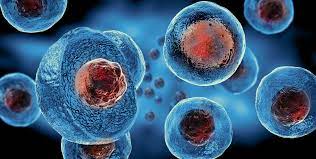- Kartaltepe Mahallesi İncirli Caddesi Limon Çiçeği Sokak No: 1 34145 Bakırköy İstanbul
- +90 541 548 52 47

How Should Hair Care Be Taken After FUE Hair Transplantation?
27/09/2022
Which Methods Are Used in the Diagnosis of Hair Loss?
27/09/2022The results of experimental research on the efficacy of stem cell therapy approaches in the treatment of alopecia are considered an exciting development. Starting from the fact that stem cells can be a potential treatment option in the regeneration and growth of hair, scientists are very hopeful about the results of their scientific research and experiments so far. As a result of the studies, it has been observed that stem cell applications give positive results, especially in non-autoimmune hair loss treatments such as androgenetic alopecia. However, scientists also say that they need more and comprehensive experimental studies to fully understand and be sure of the effectiveness of stem cell-based treatments in people with hair loss.
Alopecia is a hair loss problem that can occur due to genetic factors, some systemic and chronic diseases, hormonal disorders, weak immune system, nutritional problems, environmental factors, psychological traumas, stress and aging. It is known that all these factors have negative effects on hair health. In order to understand why stem cell therapy is so exciting for researchers working on alopecia cases, it is necessary to have some knowledge about stem cell types and hair structure.
Hair follicles have epithelial and melanocyte stem cells, also known as hair follicle stem cells, which are also involved in the regeneration of epidermal cells. Although there is a decrease in progenitor cells that proliferate actively in the scalps of people with hair loss, the number of hair follicle stem cells remains unchanged. Therefore, stem cell treatments for hair loss are considered as a promising new approach.
Let’s Get to Know the Types of Stem Cells Playing a Role in Hair Regeneration
Stem cells are classified according to their plasticity. In other words, they are grouped according to their potential to transform and differentiate.
– Multipotent stem cells
– Pluripotent stem cells
– Totipotent stem cells
– Adult stem cells, which are a type of multipotent stem cell.
In researches on hair regeneration, mainly; The use of pluripotent, multipotent stem cells and stem cells derived from adipose tissue has been emphasized. The results of the experimental researches are shared as follows:
Autologous Stem Cells
Autologous stem cells were used to treat cases of resistant patchy alopecia and androgenetic alopecia. Cells were delivered in a single administration. 1 ml at a density of 100,000 cells/m2 was injected per cm2 of the treated area. As a result of the experiment, it was observed that there was an improvement in the treated areas.
Adipose Originating Stem Cells
Adipose stem cell means stem cells derived from adipose tissue. Science considers adipose-derived stem cells as an ideal cell population in the regenerative state. A satisfactory increase in hair density was reported in alopecia cases treated using adipose-derived stem cells.
Embryonic Stem Cells
Embryonic stem cell is the ability of a cell to transform into another cell type. It has the features of reproduction, self-renewal and differentiation. As a result of the embryonic stem cell therapy experiment; functional embryotic stem cells were found to promote more hair formation and growth.
Cord Blood Stem Cells
The effects of bone marrow and umbilical cord stem cells on dermal papilla-like tissue growth were examined. As a result of the researches, it was noted that patients with severe alopecia areata experienced regrowth of their hair after receiving stem cell therapy.
How Do Experts Evaluate Experiment Results? In the articles prepared according to the results of scientific researches and experiments, experts; It is stated that they have reached the opinion that the application of stem cells in hair regeneration is promising. Stem cell regeneration has been evaluated as a suitable treatment option for various reasons for the treatment of androgenetic alopecia or non-autoimmune hair loss. Although an autologous transplant is considered the standard, its use is limited due to lack of data and decreased viability of cells obtained using this method. It is effortless to obtain stem cells originating from adipose tissue. It has an important potential in proliferation and vascularization. Although experts think that stem cell treatment approaches are promising in hair loss, they underline that more studies are neede




